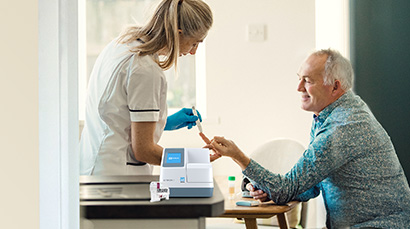Global Point of Care
床邊診斷檢測徹底改變了醫療保健
擴大全球普及率
事實上,Abbott 每年可向全世界提供超過十億份檢測。
縮短治療時間
舉例而言:採用 POC 裝置檢測的 HIV 患者獲得抗逆轉錄病毒治療 (ART) 的時間比藉助傳統實驗室診斷者短 130 天。1
改善結果
例證:接受 POC 檢測的心臟衰竭患者出院時間比未採用 POC 檢測者早 3 天,這有效改善了經濟效益和醫療保健效果。2
尋找您的床邊解決方案
瞭解 Abbott 診斷檢測解決方案可如何幫助解決包括您的難題在內的一些世界性嚴峻醫療保健挑戰。
參考資料
- Wynberg E et al. Impact of point-of-care CD4 testing on linkage to HIV care: a systematic review. Journal of the International AIDS Society (2014)17:18809-18815.
- Mueller C, Scholer A, Laule-Lilian K, et al. Use of B-type natriuretic peptide in the evaluation and management of acute dyspnea. N Engl J Med. 2004











